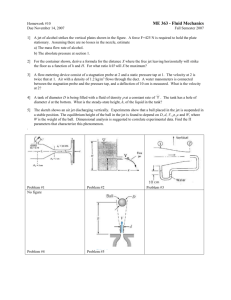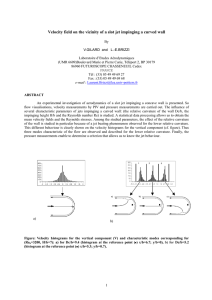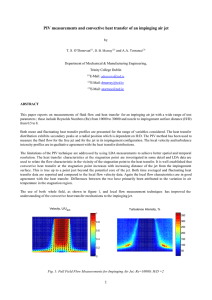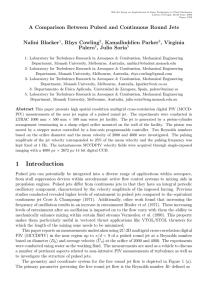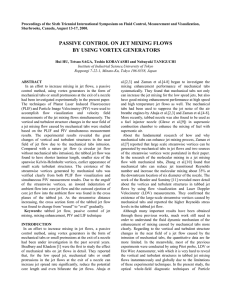Paper 11.6 measured by PIV and PTV.
advertisement
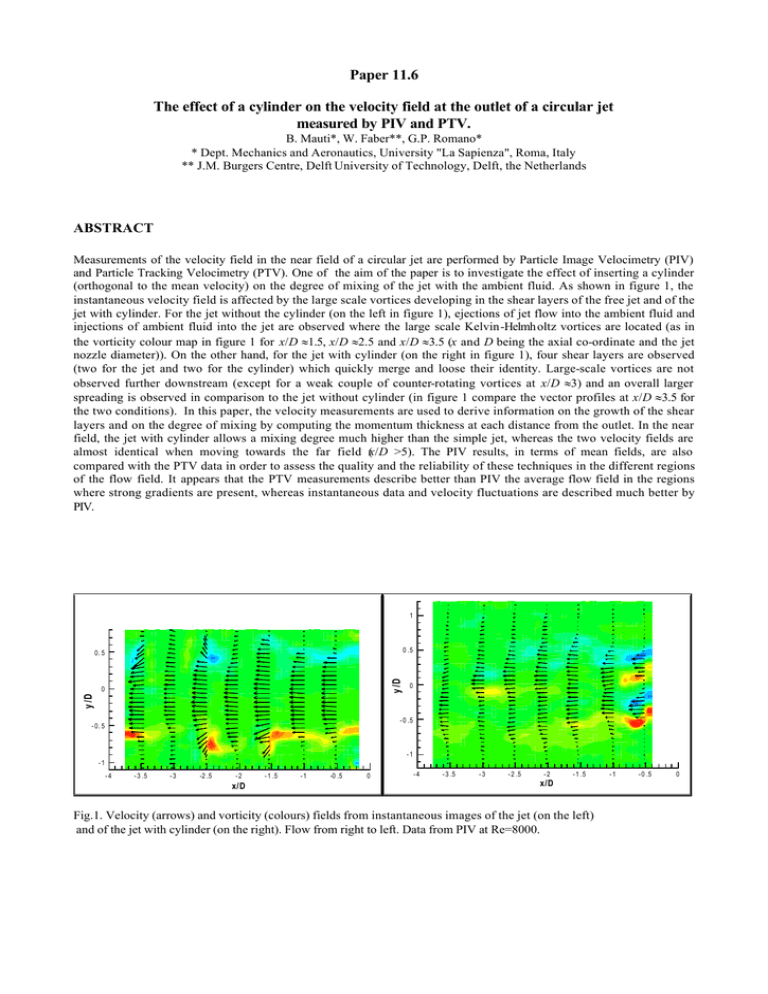
Paper 11.6 The effect of a cylinder on the velocity field at the outlet of a circular jet measured by PIV and PTV. B. Mauti*, W. Faber**, G.P. Romano* * Dept. Mechanics and Aeronautics, University "La Sapienza", Roma, Italy ** J.M. Burgers Centre, Delft University of Technology, Delft, the Netherlands ABSTRACT Measurements of the velocity field in the near field of a circular jet are performed by Particle Image Velocimetry (PIV) and Particle Tracking Velocimetry (PTV). One of the aim of the paper is to investigate the effect of inserting a cylinder (orthogonal to the mean velocity) on the degree of mixing of the jet with the ambient fluid. As shown in figure 1, the instantaneous velocity field is affected by the large scale vortices developing in the shear layers of the free jet and of the jet with cylinder. For the jet without the cylinder (on the left in figure 1), ejections of jet flow into the ambient fluid and injections of ambient fluid into the jet are observed where the large scale Kelvin-Helmh oltz vortices are located (as in the vorticity colour map in figure 1 for x/D ≈1.5, x/D ≈2.5 and x/D ≈3.5 (x and D being the axial co-ordinate and the jet nozzle diameter)). On the other hand, for the jet with cylinder (on the right in figure 1), four shear layers are observed (two for the jet and two for the cylinder) which quickly merge and loose their identity. Large-scale vortices are not observed further downstream (except for a weak couple of counter-rotating vortices at x/D ≈3) and an overall larger spreading is observed in comparison to the jet without cylinder (in figure 1 compare the vector profiles at x/D ≈3.5 for the two conditions). In this paper, the velocity measurements are used to derive information on the growth of the shear layers and on the degree of mixing by computing the momentum thickness at each distance from the outlet. In the near field, the jet with cylinder allows a mixing degree much higher than the simple jet, whereas the two velocity fields are almost identical when moving towards the far field (x/D >5). The PIV results, in terms of mean fields, are also compared with the PTV data in order to assess the quality and the reliability of these techniques in the different regions of the flow field. It appears that the PTV measurements describe better than PIV the average flow field in the regions where strong gradients are present, whereas instantaneous data and velocity fluctuations are described much better by PIV. 1 0 .5 y /D 0. 5 0 y /D 0 - 0 .5 - 0. 5 -1 -1 -4 - 3 .5 -3 -2 .5 -2 x/D - 1 .5 -1 -0 .5 0 -4 - 3 .5 -3 - 2 .5 -2 - 1 .5 x/D Fig.1. Velocity (arrows) and vorticity (colours) fields from instantaneous images of the jet (on the left) and of the jet with cylinder (on the right). Flow from right to left. Data from PIV at Re=8000. -1 - 0 .5 0





